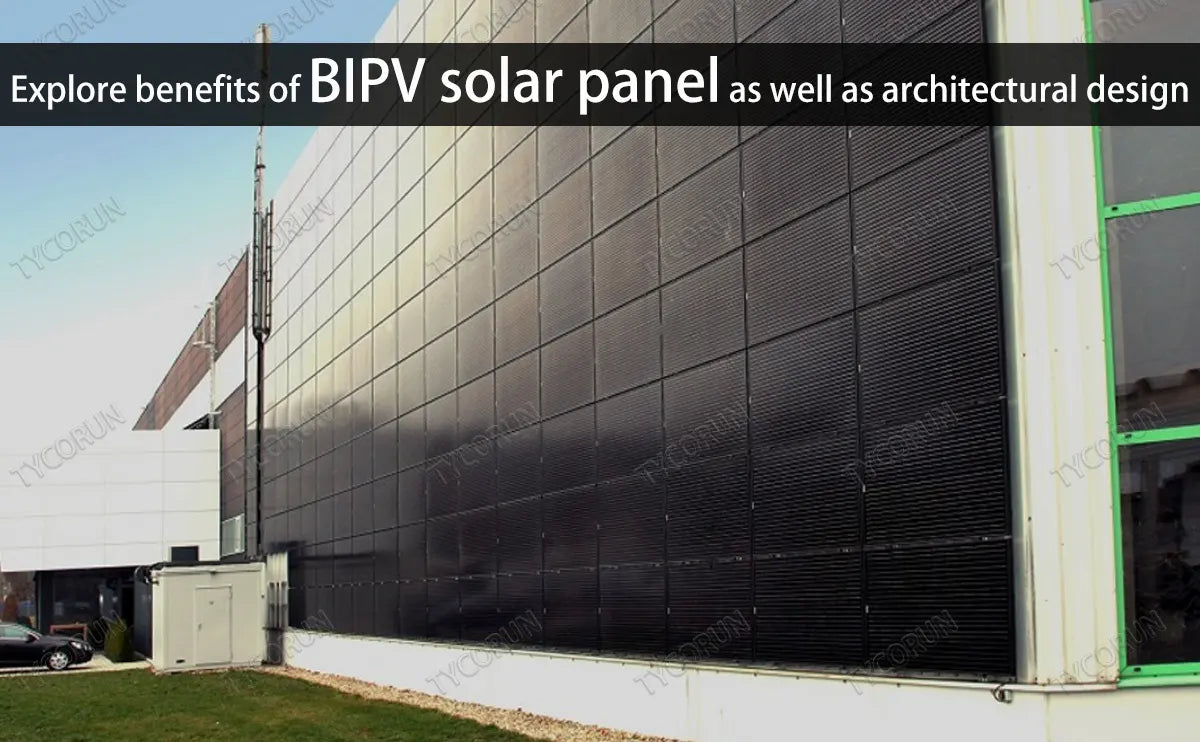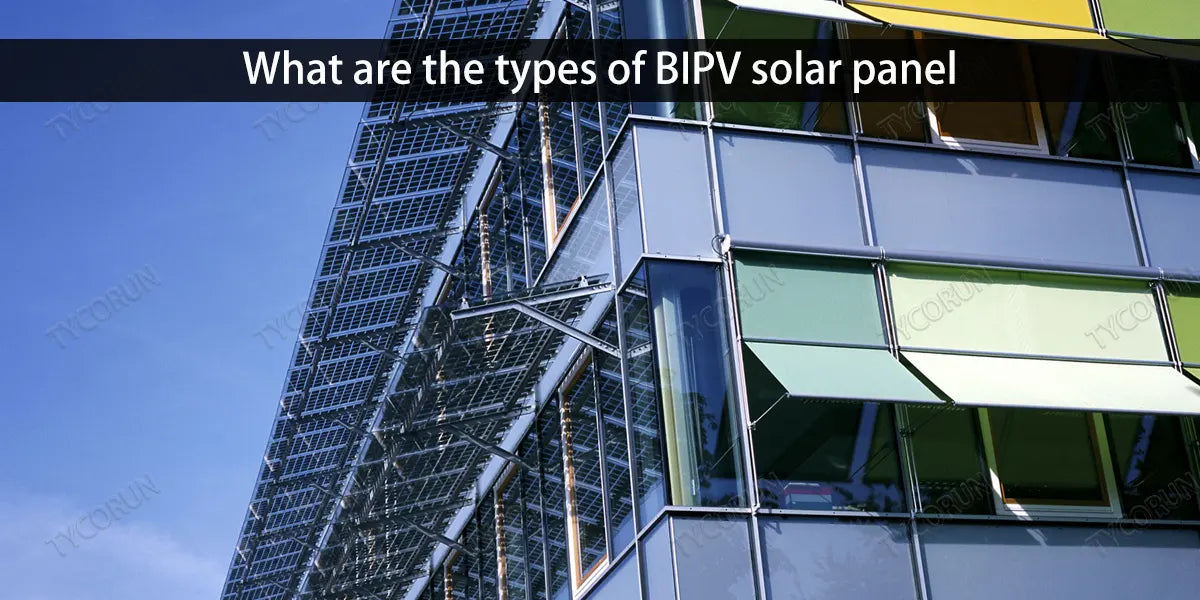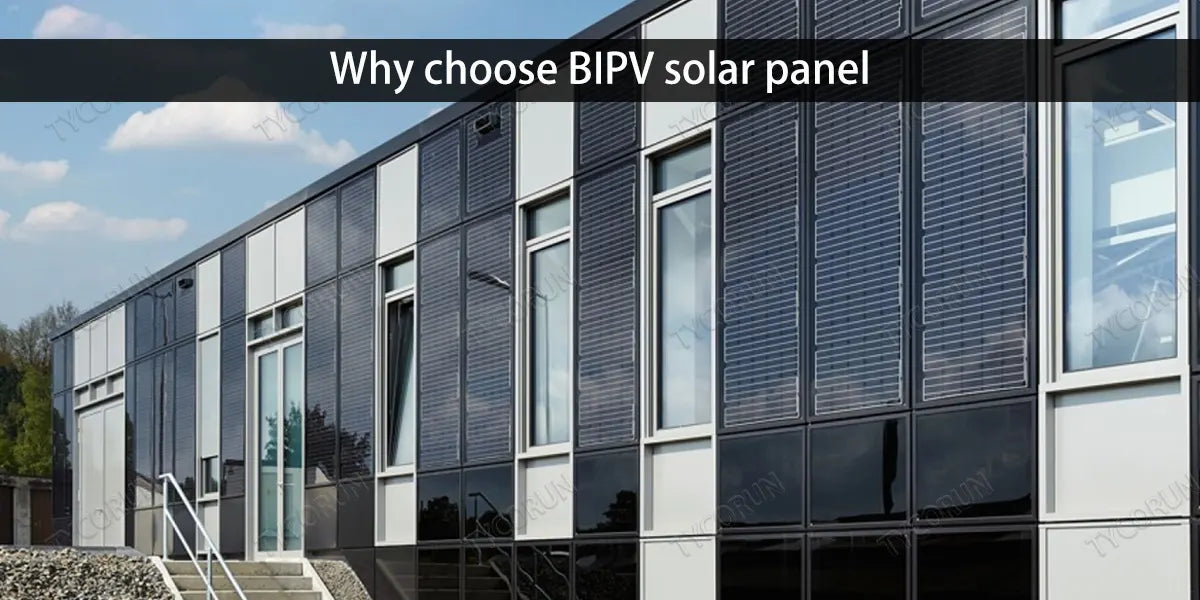
Main content:
Solar panel market is currently committed to providing a single, integrated solution. Effortlessly integrate with the building structure and improve the architectural outlook of the entire project, not just reduce electricity bills. Finally, solar technology must be aesthetically pleasing and functional.
BIPV technology used in large-scale commercial projects combines these trends. This technology can turn windows, roofs, and garages into solar power and building facilities.
This article explores this technology and its applications to maximize productivity in the photovoltaic sector. In this article, we will explore what is BIPV solar panel and net zero energy buildings mean, and discuss the importance of achieving building energy independence.
1. What is BIPV
Building-integrated photovoltaics are known as BIPV. BIPV solar panels are integrated into the building or envelope and have a certain purpose. In terms of appearance and function, BIPV photovoltaic glass can be tailored to each project. The ability to change the color of glass opens up a whole new range of design options for solar buildings.

2. What are the types of BIPV solar panel
Crystalline solar energy is the main type of solar energy used in buildings.
While both types of architectural solar glass have several applications, each has different benefits depending on the location of the solar array, the needs of the structure, and the desired aesthetic effect. BIPV solar glass has standard shapes, but it can also be customized if the project requires special shapes or sizes.
- Crystalline silicon
Crystal glass can be used to mimic high efficiency solar panels. Standard solar panels include an aluminum frame and a white or black backsheet. The opaque backplate blocks all light. Crystal glass supports solar cells. To increase the production of light or solar glass, the glass cell can be resized. Solar designers use crystalline photovoltaic bifacial modules.
Transparent solar panels generate electricity from the back. Double-sided solar panel modules are a separate category that increases power through ground reflections on the back of the module rather than physical reflections.

Crystalline BIPV solar energy is more efficient than amorphous silicon, maximizing solar output. Crystal glass is attractive because of its unique appearance. Architects can now create solar systems in a variety of colors.
3. Why choose BIPV solar panel
Choosing a building-integrated photovoltaic (BIPV) solar panel offers many advantages. BIPV systems generate clean and renewable energy, promote energy independence and reduce carbon emissions. They provide aesthetic appeal by seamlessly blending into building materials to make efficient use of available space.
While the initial cost may be higher, BIPV panels offer long-term cost savings and a positive return on investment. They are durable, require minimal maintenance, and offer design flexibility for enhanced architecture integration.

BIPV panels contribute to a green future and improve building performance by reducing dependence on fossil fuels. It is in line with the Sustainable Development Goals and is good for both the environment and the building owner.
4. BIPV solar panels in the construction industry
In recent years, the use of building-integrated photovoltaic (BIPV) solar panels has gained wide application in the construction industry, especially in the design of energy buildings.
A net zero energy building is a building that produces as much energy each year as it consumes, resulting in zero net energy consumption. Incorporating BIPV solar panel into building design can help achieve this by harnessing solar power to generate electricity.
BIPV solar panels are integrated into the building envelope as both an energy source and a building material, reducing the need for additional cladding and roofing materials. To maximize the energy efficiency of net zero energy buildings, a variety of strategies can be employed.
First, the design of the building envelope must minimize energy loss through thermal insulation, airtightness, and high-performance glazing, and the orientation of the building also plays a key role in maximizing solar gain and reducing energy demand. BIPV solar panel must be optimally oriented and shaded to ensure maximum energy generation.

In general, the best orientation for BIPV solar panel is south-facing in the northern hemisphere and north-facing in the southern hemisphere. In addition, the angle of the panels should be adjusted to match the latitude of the construction site to capture the maximum amount of sunlight throughout the year.
Shading analysis is also critical to designing net-zero energy buildings with BIPV solar panel. Occlusion of nearby buildings, trees, and other obstacles can significantly reduce the amount of electricity generated by panels. Therefore, it is necessary to evaluate the potential shading effects during the design phase and mitigate them with shading devices such as cantilevers, blinds or screens.
Energy storage technologies come in many forms, including batteries(12v 100ah lithium ion batteries), flywheels, pumped hydro, and heat storage. Due to their reliability and scalability, 12 volt 200ah lithium battery is currently the most commonly used form of energy storage. Lithium-ion batteries are particularly important for commercial use.
5. Conclusion
The adoption of BIPV solar panels has the potential to revolutionize the way we design and consume energy. By using BIPV solar panel, the goal of a net zero energy building can be achieved, that is, the total amount of energy consumed is equal to the amount of energy generated on site.
The benefits of BIPV solar panel is numerous, including reducing carbon emissions, providing reliable renewable energy, and increasing energy independence. However, there are also some challenges associated with installing BIPV solar panel, such as cost, maintenance, and system integration.
Related articles: home energy storage, Solar panel mount, improve solar panel efficiency
















